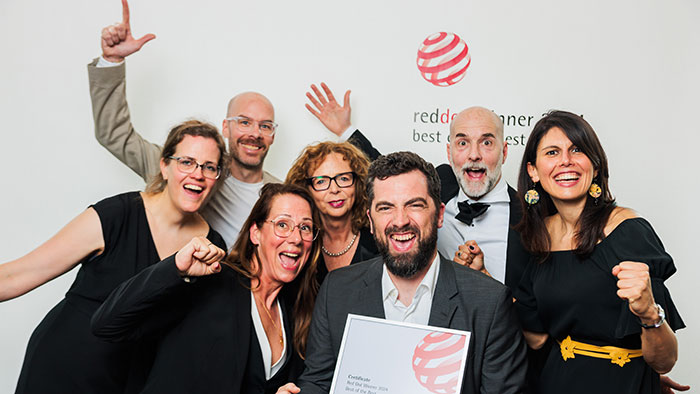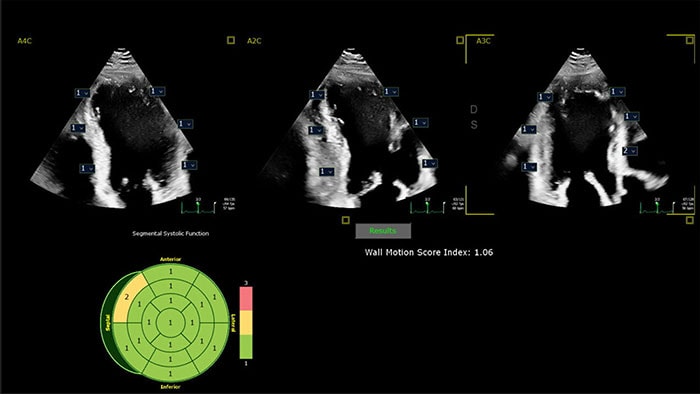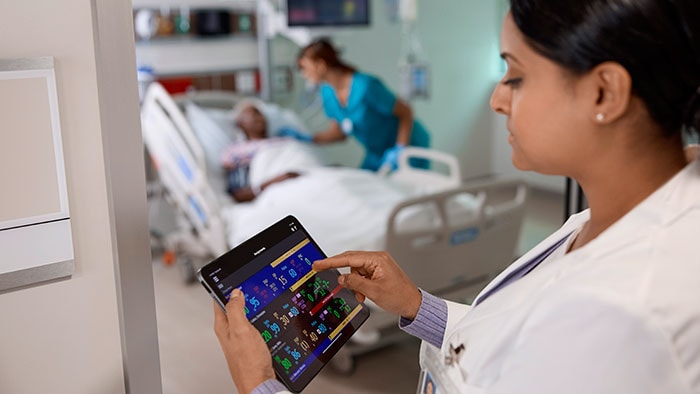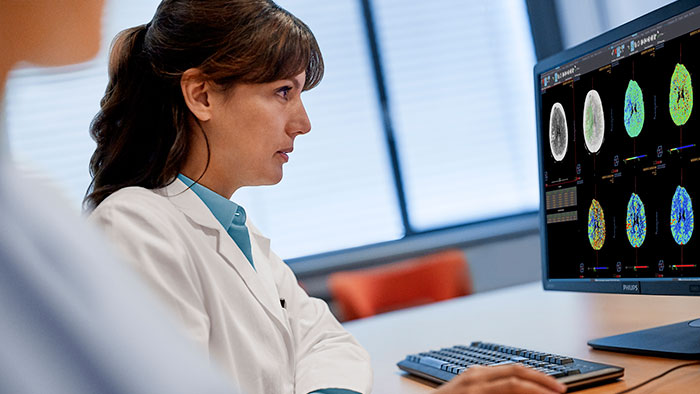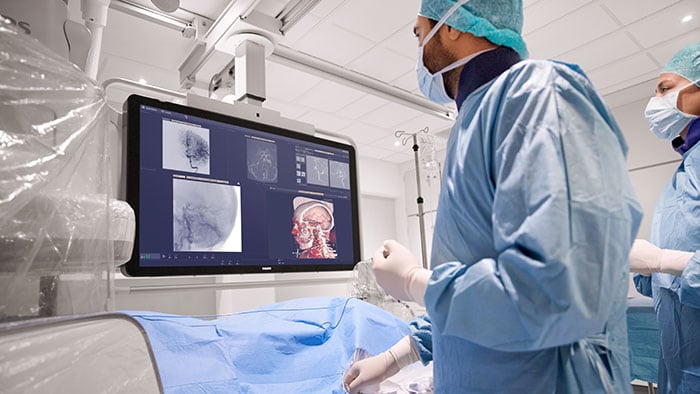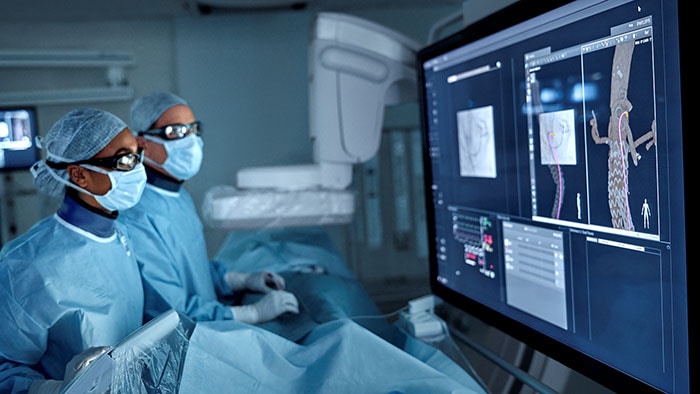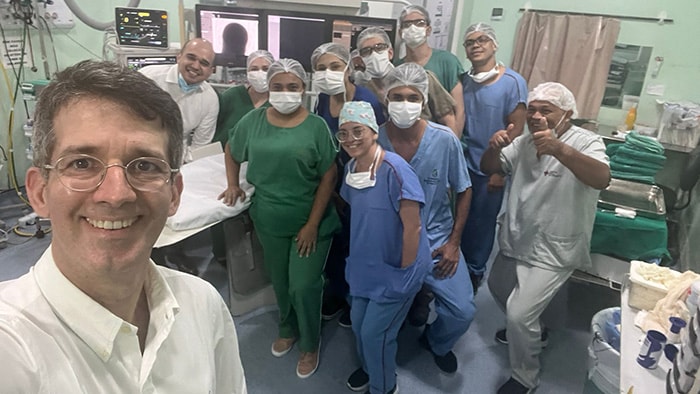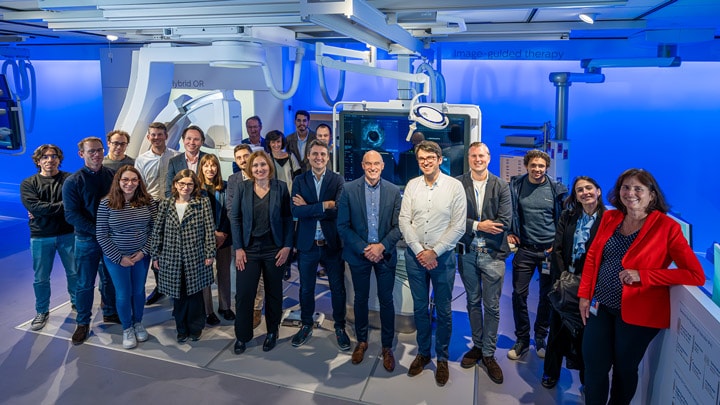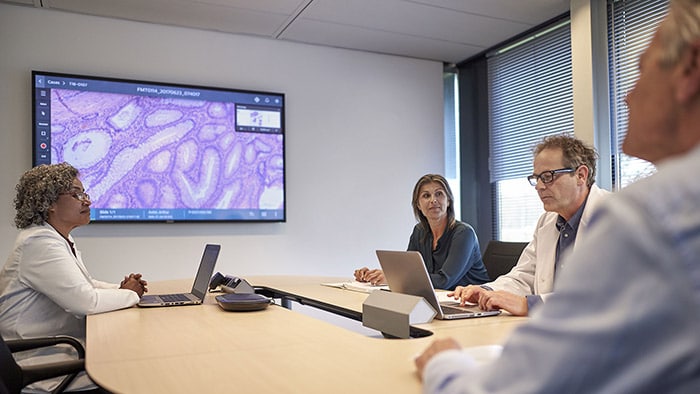Visitors to Philips @The Blue Level at ECR, the largest exposition space at the Congress, will experience how Philips’ AI-powered technology turns data into actionable insights to increase diagnostic confidence and clinical outcomes to improve patient and staff experience, drive operational efficiency and help lower the cost of care.
Smart connected imaging systems powered by leading clinical and AI technology
Radiology plays a critical role in diagnosing and guiding patients into the right treatment plans. Philips has designed smart connected imaging systems to support the latest technologies with access to clinical-specific applications for cardiology, neurology, oncology and musculoskeletal imaging to enhance collaboration and information sharing across medical domains. The result is clinically relevant, high-quality diagnostic images that are right the first-time, providing clinicians access to the information they need to provide the best possible care for their patients.
A key focus for Philips at ECR is MR 5300, the next evolution breakthrough technology in helium-free MR operations featuring Philips’ exclusive BlueSeal magnet. Powered by AI -driven technology, MR 5300 is designed to simplify and automate the most complex clinical and operational tasks to help boost MR productivity, speed up exam times and enhance clinical decision-making.
Also featured is MR 7700, a new breakthrough in 3.0T imaging with an enhanced gradient system designed to deliver outstanding imaging results and speed to support confident diagnosis for every patient, with up to 35% shorter scan time with higher diffusion image quality for all anatomies [1]. This latest high-performance MR system allows radiologists to image six different clinically relevant nuclei [2] across all anatomies to help increase diagnostic confidence and add important metabolic information to MR exams to help tackle complex research programs and improve clinical decision-making to help provide improved patient care.
Philips will spotlight its latest innovations in CT, featuring the award-winning Spectral CT 7500, designed to deliver spectral information needed to change outcomes, reduce the number of exams and related costs, and relieve the burden on radiology departments. Spectral CT 7500 has demonstrated a one month of time to diagnosis saved for cancer patients [3] with 300,000 fewer follow-up scans due to incomplete diagnosis [4] and 96 out of 100 non-malignant cysts identified with certainty [5].
Adding to Philips growing suite of AI-enabled smart workflow solutions is the Incisive CT with CT Smart Workflow, designed to support operator consistency, and diagnostic confidence at the point of image acquisition by automating many of the time-consuming procedural tasks that staff typically perform manually. Results have shown a decrease in dose by up to 80%, lowered noise reduction of up to 85%, and improved low-contrast detectability by 60% compared to standard reconstruction with Precise Image [6].
Philips will also highlight DXR Smart Workflow to help increase the number of patients that can be examined per day, shorten patient wait times, and decrease the time to diagnosis with AI innovative workflow efficiency [7]. Systems can be configured with AI solutions for workflow and reading support, allowing clinicians to see 15 more patients per day and avoid up to 28 retakes per week [8].
Making its first appearance at ECR is Philips’ newly introduced Ultrasound Compact System 5000 series [9] next-generation portable compact ultrasound solution. The portability of the new system brings quality ultrasound to the patient wherever they are in the hospital, with advanced features not typically found on a portable system, including AI-powered automation tools to help enable definitive diagnosis from the first scan in clinical areas including emergency medicine, with 30% shorter exam times for Focused Assessment with Sonography in Trauma (FAST) [10].
Philips Ultimate Ultrasound Solution for Liver Assessment, featuring Liver Fat Quantification tools as part of the latest release of EPIQ Elite and Affiniti ultrasound systems, bringing the cost and accessibility advantages of sonography to the diagnosis of early-stage liver disease. The new tools allow clinicians to track liver health and enable them to intervene early enough for many patients to adopt lifestyle changes to help prevent or reverse liver disease.
EPIQ Elite ultrasound featuring an exceptional level of clinical performance, workflow, and advanced intelligence to meet the challenges of today’s most demanding practices. The EPIQ Elite platform brings ultimate solutions to ultrasound, with clinically tailored tools designed to elevate diagnostic confidence to new levels.
Integrated radiology workflow solutions driving operational efficiency
Optimizing clinical workflows can help eliminate waste and allow hospitals to use their resources more efficiently, which translates into improved patient flow and delivery of higher quality care to patients. At ECR, Philips will spotlight its advanced technology to simplify and connect workflows to help reduce variability and staff workload, drive operational efficiency, and enhance the patient experience. Solutions include the new Advanced Visualization Workspace, featuring more than 70 clinical applications for first-time right clinical insights and proven cost savings. The AI-based data pre-processing of the platform saves five hours of work per week, equating to a cost savings of $85,000 per year [11].
Additional AI-powered solutions featured at ECR include Radiology Workflow Orchestrator (embedded in Image Management – Vue PACS), comprised of intelligent algorithms that automatically determine and deliver the right case to the most appropriate available radiologists, based on their area of expertise availability and current workload, to efficiently balance caseloads and accelerate reading times with a 50% improvement in productivity and 40% decrease in average reporting time [12].
Philips will also demonstrate how its tele-radiology technology provides access to radiology expertise where and when needed through innovative solutions including Imaging Orchestrator – ROCC, a vendor-neutral, multi-modality, multi-site telepresence solution that provides advanced tele-acquisition capabilities and seamlessly connects imaging experts at a command center with technologists at scanners across locations. Also featured at ECR is Ultrasound Collaboration Live [13], available on Philips’ EPIQ Elite and Affiniti ultrasound platforms. Ultrasound teams can securely talk, text, screen-share, and video stream directly from their ultrasound system to a PC or mobile device, allowing them to extend their team without expanding it, with 100% of patients stating they have had better access to healthcare through tele-ultrasound delivered by Collaboration Live [14].
Image Management -Vue PACS provides web-enabled diagnostic viewing to help drive efficient workflows and easy image sharing capability from a single source of imaging information used to create the Imaging Health Record, drive value and support decision-making.
Radiology Information System (RIS) 11.6 (embedded in Image Management - Vue PACS), is a zero-footprint, administrative and clinical workflow management solution that allows the entire radiology department and ancillary users, to enter, store, view, manage and transfer patient information with a quick and easy-to-use system. The newest release of RIS (v. 11.6) expands patient-oriented functionalities including dedicated access for arriving patients in the hospital and conformance to Web Content Accessibility Guidelines (WCAG). The Patient Assistant application allows patients to schedule their own exams, and the Patient Kiosk application gives them the opportunity to sign-in when they arrive at your facility.
Enterprise Performance Analytics (embedded in Image Management - Vue PACS), formerly known as PerformanceBridge, is a portfolio of vendor-neutral real-time data analytics and workflow solutions designed to empower health systems to improve operational performance and reduce costs, while building and sustaining continuous improvement. Integrating data from multiple industry-standard sources (such as HL7, DICOM and other structured data sources) into one platform allows for a comprehensive real-time view across the healthcare enterprise. Data aggregation enables AI generated best-case scenarios, predictive budgeting, staffing mix/modelling, and right-size fleet projections.
AI in the workflow (embedded in Image Management - Vue PACS) combines the power of AI with deep clinical knowledge to create solutions that integrate into the workflows of healthcare providers and people’s daily health routines. AI-enabled PACS provides automatic analysis of medical data and extraction of relevant information to generate meaningful – and actionable – insights that enable more precise and personalized patient care. It also allows access to a large portfolio of validated third party AI algorithms that integrate seamlessly in the existing radiology workflow.
Interactive Multimedia Reporting (embedded in Image Management – Vue PACS) helps to cut reporting turnaround times and eliminates the need for typing and entry of patient or clinical context. This single-user interface for reading images and reporting includes speech recognition, editing, and the ability to embed key images for side-by-side comparison. Easily view bookmarked findings as part of the entire imaging study. Auto population of DICOM and HL7 data, voice dictation and ability to include hyperlinks to prior studies and key images and graphs in the report, providing rich clinical insights for faster and more accurate decision-making. Exam data can be inserted directly into reports, enabling radiologists to quickly review and approve final reports while adding clinical context for referring physicians.
MR Workspace is an industry-unique control room engine that delivers quality and efficiency easily scalable across the enterprise without compromising quality. This intuitive, AI-enabled [15] solution is designed to simplify the path from image acquisition to diagnosis to empower care teams to drive productivity and predictability for a smooth-running department.
Philips reinforces sustainability focus and commitment at ECR
Globally, healthcare systems account for more than 4% of global CO₂ emissions [16]. More than the aviation or shipping industry. Public and private entities are increasingly acknowledging and responding to the urgent need for more environmentally sustainable radiology by partnering for change. ECR attendees can join Philips and other global industry leaders – including the European Society of Radiology and Healthcare Without Harm Europe – in the Sustainability Zone located on Level 2 of the ECR 2023 Congress floor at Philips@The BlueLevel to hear first-hand about the advancements and global efforts currently underway to help drive the decarbonization of radiology.
Join Philips in person at the Blue Level at ECR, or virtually via the Philips interactive online radiology experience and follow @PhilipsLiveFrom for #ECR2023 updates throughout the event.
[1] Compared to Ingenia Elition X with Vega XP gradients.
[2] Investigational device for imaging with fluorine (19F) and xenon (129Xe). Limited by federal (or United States) law to investigational use. Clinical imaging with these nuclei requires usage of a cleared drug. No FDA-cleared drugs are currently available for these nuclei.
[3] 2017_IQon_WhitePaper_EconomicImpactRenalInsufficiency.pdf
[4] 2020_IQon_ClinicalElement_DualVsSingleEnergy.pdf (philips.com)
[5] 2020_IQon_ClinicalElement_Dual-LayerSpectralCysts.pdf
[6] Lower image noise, improved low-contrast detectability, and/or dose reduction were tested using reference body protocols. All metrics were tested on phantoms. Low-contrast detectability tests were performed using 1.0 mm slices, and tested on the MITA CT IQ Phantom (CCT183, The Phantom Laboratory), using an auto tool “CHO” (Channelized Hotelling Observer). Data on file.
[7] Riverain Technologies’ ClearRead Bone Suppression & Philips UNIQUE 2 Image Processing.
[8] Compared to the previous release of DigitalDiagnost and based on 100 patients per day. Actual results in other cases may vary.
[9] Not available for sale in all markets. Pending CE Mark.
[10] Compared to the CX50 ultrasound system.
[11] Specktor B. Preprocessing prediction of advanced algorithms for medical imaging, J Digit Imaging 31:42 42-50, 2018 – Specificity results related to the heart segmentation and bone removal prediction performance as a function of number of positive training examples. Results from usage in 4 customer sites and don’t reflect other usage in other sites; $ savings estimated based on AVG radiologist hourly fee in the USA.
[12] Results from case studies are not predictive of results in other cases. Results in other cases may vary.
[13] Collaboration Live is only available for sale in selected markets.
[14] Prospective study of 30 subjects undergoing routine obstetric ultrasound imaging, New Mexico, USA. Michael S. Ruma, et al., The Use of a Novel Telemedicine Tool in Perinatology [abstract].30th ISUOG World Congress, 2020. Results from case studies are not predictive of results in other cases. Results in other cases may vary.
[15] According to the definition of AI from the EU High-Level Expert Group.
[16] Health care climate footprint report | Health Care Without Harm (noharm-global.org)
Share on social media
Topics
Contact

Kathy O'Reilly
Philips Global Press Office Tel.: +1 978-221-8919
You are about to visit a Philips global content page
Continue


